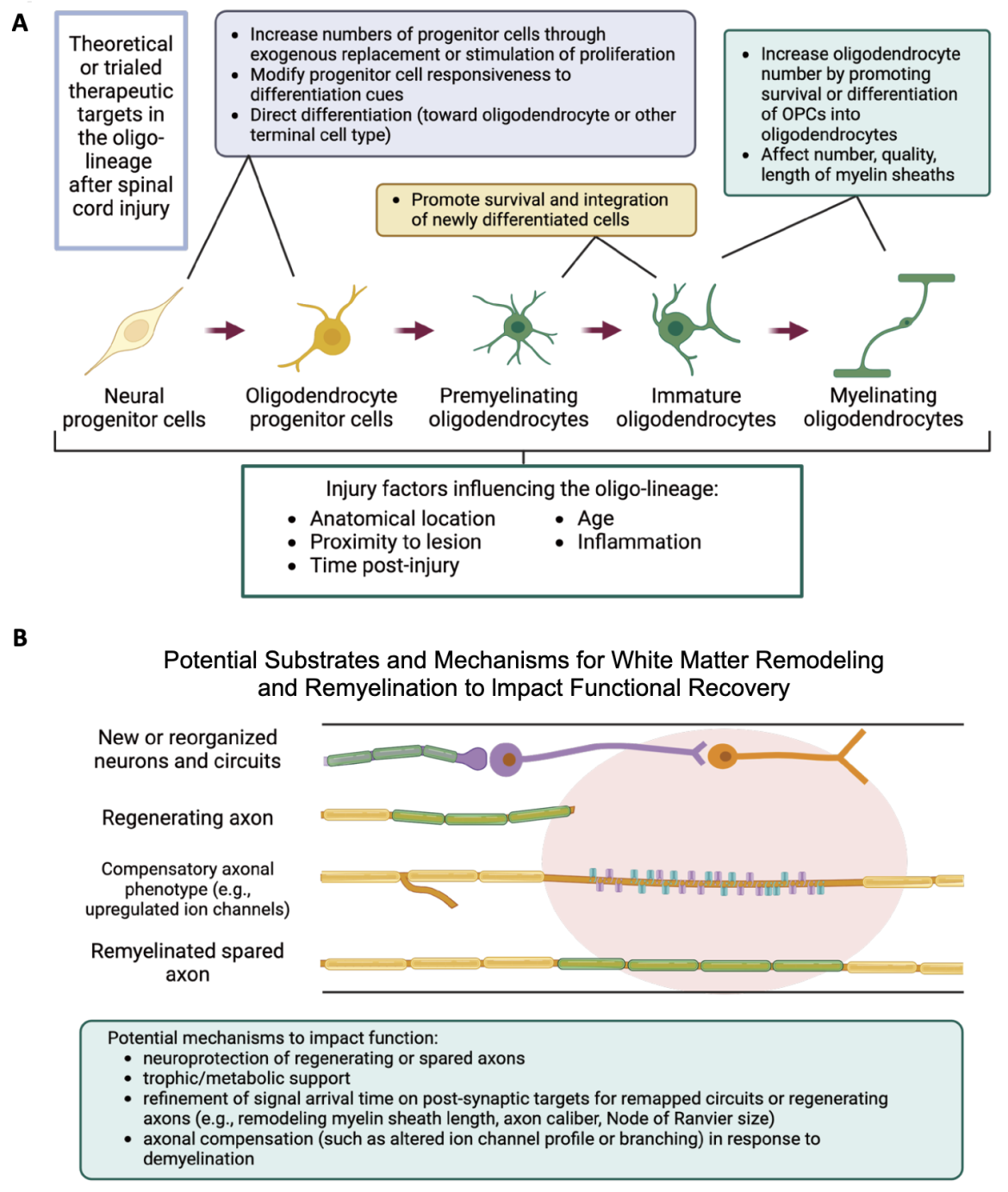
Figure 1 | Potential therapeutic targets in the oligo-lineage and potential mechanisms of white matter remodeling post-injury. (A) A simplified diagram of the oligo-lineage illustrating potential therapeutic targets or strategies at each stage. Strategies range from well-studied and trialed (e.g., exogenous transplant), active areas of preclinical research (e.g., modifying progenitor cell responsiveness) to theoretical (e.g., modifying the number of myelin sheaths per oligodendrocyte or the length of myelin sheaths.) Other potential terminal fates for progenitor cells are not shown. The oligo-lineage can be further modified by external factors or indirectly affected by interventions targeting other cell types/processes (e.g., inflammation). These confounds complicate the search for interventions and interpretation of efficacy results. (B) A diagram detailing potential mechanisms by which white matter remodeling may promote functional recovery after injury. Newly generated or remapped neurons (in purple) may require new myelin (green) to adjust the timing of action potential propagation. Regenerating axons may require myelin for trophic and metabolic support. Stretches of demyelinated axons may induce compensatory phenotypes which can be targets for functional recovery. Remyelination of spared axons may promote neuroprotection and re-establish appropriate signal conduction. Created with BioRender.com. OPCs: Oligodendrocyte precursor cells.
Bethany R. Kondiles*, Wolfram Tetzlaff. 2025. Improving recovery from traumatic spinal cord injury: targeting remyelination versus white matter remodeling. Neural Regeneration Research
The inter-related pathological cascades following a traumatic spinal cord injury (tSCI) disrupt multiple cell types and physiological processes. Subsequently, motor and sensory functions are disrupted by breakdowns in cellular interactions and circuitry. Therapeutic interventions seek to modify some aspects of the injury course to enable the re-establishment of functional circuitry. Interventions often target one cell type (e.g., promoting neuroprotection or neural regeneration) or one process (e.g., modulating inflammation, affecting astrocytic, microglial, or macrophage responses.) Many axons in the spinal cord are myelinated, and after injury oligodendrocyte death causes demyelination. Promoting remyelination of spared or new axons to re-establish conduction seems a logical choice as a therapeutic target. However, “remyelination” refers to a binary process: the presence or absence of myelin regeneration. “White matter remodeling” considers the plasticity of and interactions between the multiple cell types essential for signal conduction. As the field develops more combinatorial approaches, wherein interventions target multiple cell types and processes, incorporating the concept of white matter remodeling, as opposed to remyelination, considers how to re-establish the requisite cellular circuitry necessary for regaining function.